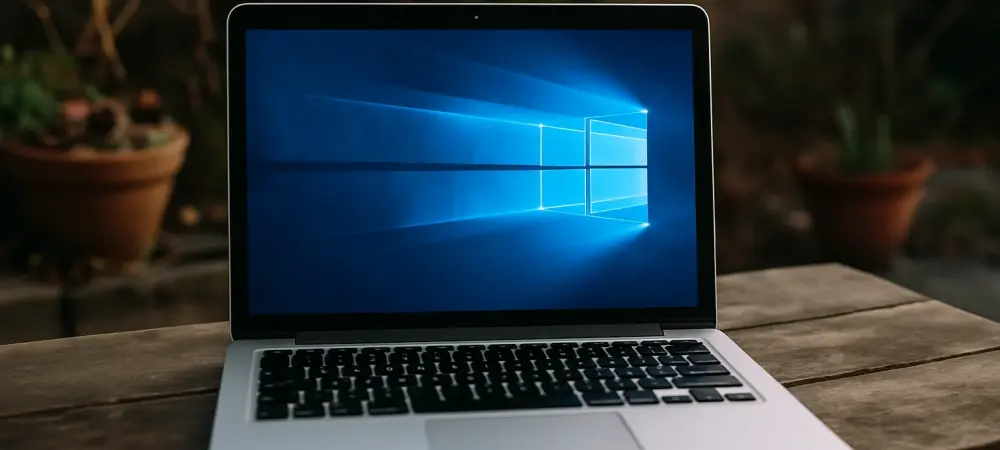In a digital landscape where security and performance are paramount, a significant announcement has surfaced that impacts millions of users globally who rely on a cornerstone operating system for their daily tasks. Microsoft has sounded the alarm about the approaching end of support for Windows 10, a platform that has been a backbone for personal and professional computing for years. This critical deadline, set for October 14, marks the cessation of mainstream support for several versions, including Windows 10 version 22 across Home, Pro, Enterprise, Education, and IoT Enterprise editions. Beyond this date, users will face heightened risks as security updates and patches become unavailable unless specific measures are taken. This development underscores the urgency for individuals and organizations to prepare for a transition that could redefine their digital experience, highlighting the need to stay ahead of potential vulnerabilities in an ever-evolving threat landscape.
Preparing for the Transition
Understanding the Impending Deadline
As the cutoff date of October 14 looms, Microsoft has intensified efforts to ensure that users are fully aware of the implications of continuing to operate on unsupported versions of Windows 10. This deadline signifies the end of free monthly security updates and preview releases for most editions, leaving systems exposed to emerging cyber threats without the shield of regular patches. The company has been clear in its messaging, emphasizing that the final security update will be distributed on this date for those who do not opt into additional support programs. This moment serves as a pivotal reminder of the importance of maintaining up-to-date software to safeguard sensitive data and ensure operational continuity. For many, this announcement is a wake-up call to evaluate current systems and consider the risks of inaction, especially in environments where cybersecurity is non-negotiable. The focus remains on driving awareness and prompting timely decision-making to avoid potential disruptions.
Exploring Available Options for Users
Beyond the immediate deadline, Microsoft has outlined pathways for users who find themselves unable to transition immediately to newer platforms. One such option is the Extended Security Updates (ESU) program, a paid service designed to provide critical security patches for a limited period after support ends. This solution caters to both individual users and organizations, offering a temporary buffer for those constrained by budget, hardware limitations, or other barriers to upgrading. However, the ESU program is not a long-term fix, as it comes with associated costs and a defined duration. Users are strongly encouraged to view this as a stopgap while planning a full migration to Windows 11, which promises enhanced features and ongoing support. The diversity of user circumstances is acknowledged, with Microsoft aiming to balance the push for modernization against the practical challenges faced by segments of its user base. This nuanced approach seeks to minimize the number of systems left vulnerable post-deadline.
Looking Ahead to a New Era
Embracing the Shift to Windows 11
Microsoft’s strategic vision clearly centers on guiding users toward Windows 11, positioning it as the future of secure and efficient computing. This operating system brings a host of advancements, from improved user interfaces to robust security protocols designed to counter modern cyber threats. The push to migrate is rooted in a broader industry trend of phasing out older platforms to streamline support and focus resources on cutting-edge technology. For users, this shift represents an opportunity to leverage tools that enhance productivity and protect against vulnerabilities that older systems can no longer address. Microsoft has been proactive in communicating the benefits of this transition, aiming to ease concerns by highlighting compatibility solutions and support resources. The emphasis is on creating a seamless move to a platform that aligns with current and future digital demands, ensuring users are not left behind in a rapidly changing tech environment.
Addressing Potential Resistance and Challenges
Despite the clear benefits of upgrading, a segment of the user base may continue to operate on Windows 10 due to various obstacles, ranging from financial constraints to personal preference or lack of awareness. Hardware compatibility remains a significant hurdle for many, as older devices may not meet the requirements for Windows 11, necessitating costly replacements. Microsoft recognizes these challenges and has hinted at the possibility of emergency patches for critical vulnerabilities in unsupported systems, a practice seen in past scenarios. However, such measures are not guaranteed and should not be relied upon as a primary strategy. The company’s long-term stance on users who remain on outdated systems remains under speculation, but the focus is on encouraging proactive steps rather than reactive fixes. This situation highlights the delicate balance between technological advancement and accommodating diverse user needs, a dynamic that will likely shape future policies and support frameworks.

